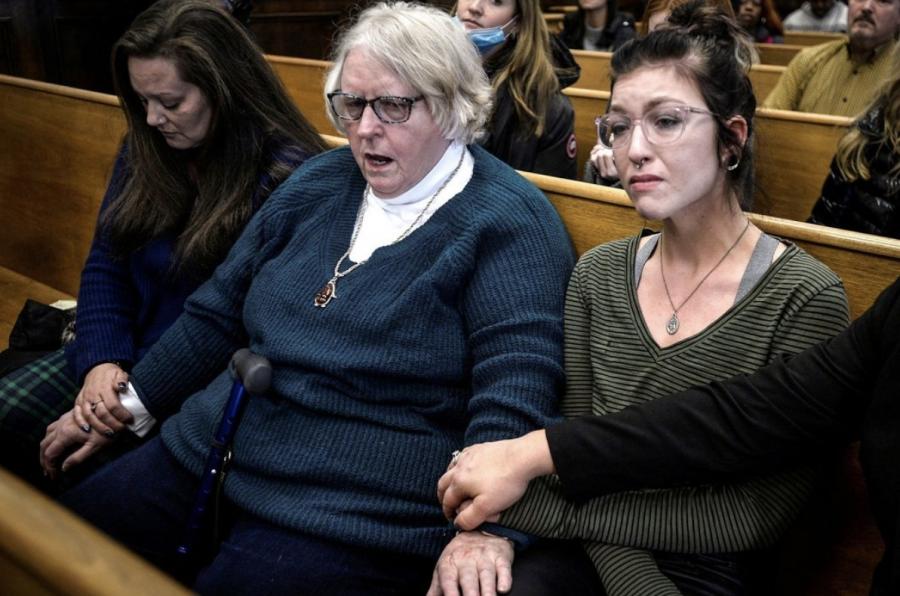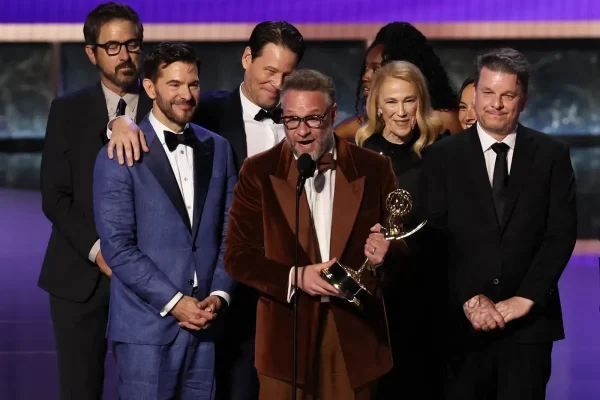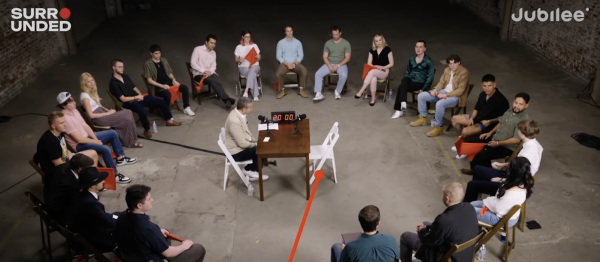Kyle Rittenhouse acquitted on all charges
December 16, 2021
On Nov. 19, 18-year-old Kyle Rittenhouse was found not guilty in a murder trial connected to the Black Lives Matter protests that took place in Kenosha, Wisconsin during the summer of 2020. The trial sparked a nationwide debate about gun violence and the numerous ways that racial inequality infiltrates American society.
The trial highlighted the events that occurred on Aug. 25, 2020, in Kenosha, Wisconsin after Illinois resident, Kyle Rittenhouse, crossed state lines to attend the third day of protests against police brutality in response to the murder of Jacob Blake. Armed with an AR-15 rifle in one hand and a medical kit in the other, Rittenhouse fatally shot two men and critically injured another. Although he was not arrested at the scene, Rittenhouse was later extradited to Wisconsin following his arrest.
Mr. Rittenhouse initially faced seven charges at the start of the trial: (1) First-degree reckless homicide, use of a dangerous weapon, (2/3) First-degree recklessly endangering safety, use of a deadly weapon, (4) First-degree intentional homicide, use of a dangerous weapon, (5) Attempted first-degree intentional homicide, use of a dangerous weapon, (6) Possession of a dangerous weapon by a person under 18, (7) Failure to comply with an emergency order from state or local government.
Despite the 8 p.m. curfew imposed by the city during the protests, Rittenhouse, 17-years-old at the time, failed to abide by the emergency order. However, the judge later dismissed the seventh charge during the trial, citing a lack of evidence offered by the prosecution. Judge Bruce Schroeder also dismissed the sixth count of possession of a dangerous weapon by a person under 18 after defense attorneys argued Mr. Rittenhouse did not violate the state statute due to his age and the length of the weapon’s barrel. Testimony showed the gun Mr. Rittenhouse used during the day in question was purchased by his friend, Dominick Black. These decisions are just some of the many details of the trial that have come under scrutiny in recent weeks.
During the trial, the defense argued that Kyle Rittenhouse’s actions were done as an act of self-defense. Two eye-witnesses were called to the stand to testify and claimed that the protesters were “violent rioters” who made verbal threats against the defendant, smashed street lamps, and set cars and shops on fire. The defense hit a fever pitch when Rittenhouse, himself, took the stand to testify.
In his re-telling of events, Rittenhouse recalls the late Joseph Rosenbaum as the initial aggressor during the fatal altercation. He claims to have seen Rosenbaum running toward him with his arms stretched out, prepared to attack. Feeling cornered, Rittenhouse testified that he shot at Rosenbaum until he felt that he was no longer a threat to him.
Although his credibility has been greatly and justifiably questioned since the incident occurred, Rittenhouse maintains that he had planned to turn himself in before a mob of protesters began chasing him and eventually wrestled him to the ground. Fearing for his life, Rittenhouse shot and killed his second victim, Anthony Huber, who allegedly beat him with a skateboard in the moments before the fatal shot.
Despite the defense’s claim that Rittenhouse was never the aggressor, the prosecution aimed to paint him in a much different light. Their main argument centered around his unnecessary possession of an AR-15 across state lines. The prosecution utilized several eyewitness accounts who recalled that they saw Rittenhouse aim his gun at other protestors throughout the night. The prosecution’s ultimate goal was to depict Rittenhouse as an armed threat who never had to fear for his life with such a powerful weapon poised in his hands.
The most controversial part of the trial came when the prosecution introduced drone footage of the altercation that portrayed Rittenhouse firing at Rosenbaum at close range. This footage, among many other videos taken during that night, has been the catalyst for national division as viewers are unable to conclude or agree on whether Rittenhouse was acting in defense or if he had any right to own a firearm across state lines at all.
While Rittenhouse was ultimately acquitted of all charges, many people have commented on some noticeable discrepancies in his recount of the night’s events. Rittenhouse originally claimed that he was in Kenosha as a certified EMT intending to patrol the streets and help anyone who was injured. However, during the trial, Mr. Rittenhouse testified that he lied during the cross-examination and was never there as an official EMT of any kind.
In another statement made by the defendant, Rittenhouse claims that he was enrolled in nursing courses at Arizona State University. However, the university has since reported that Rittenhouse was never enrolled in the nursing program at their institution. The prosecution among others believes this was a petty attempt to rescue his image in the public eye.
Since the jury delivered their decision on Nov. 19, the nation has become more divided than ever. While many have rushed to Rittenhouse’s defense, even going so far as to celebrate his release, others have pointed out that his acquittal is nothing to celebrate as two lives were lost in the process.
Additionally, many have pointed out that Rittenhouse’s elevated status as a straight, cis-gendered white male may have helped him win this case as history and statistics show that black men are still incarcerated at a much higher rate, for longer amounts of time and for less extensive charges than white men are.
Moving forward, it is unclear how or if this case will change the precedent for self-defense trials in the future. Nevertheless, one thing is clear: two men lost their lives fighting for racial justice while their murderer walks free, and sadly, there seems to be no end to the conversation surrounding racial violence in sight.













